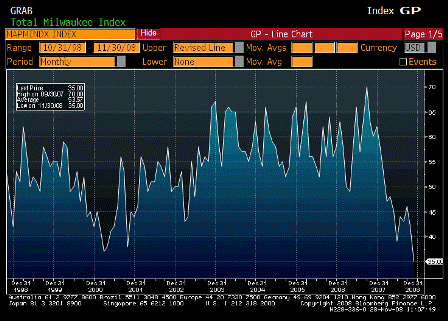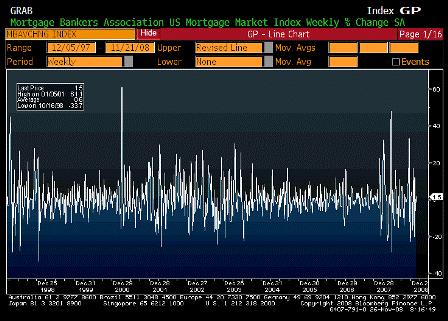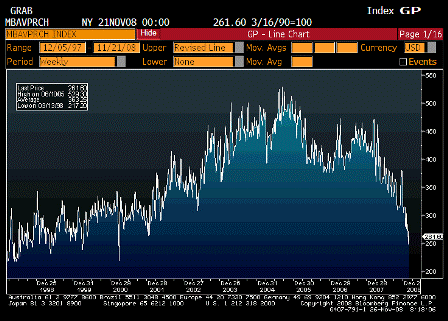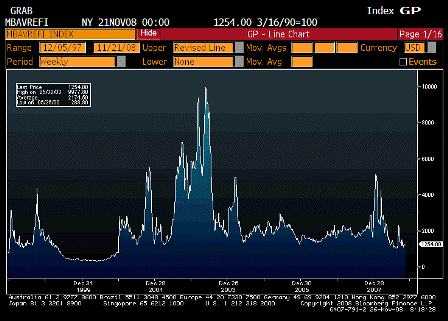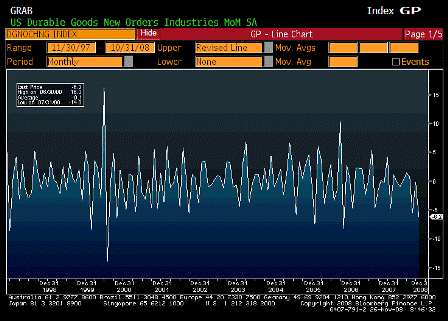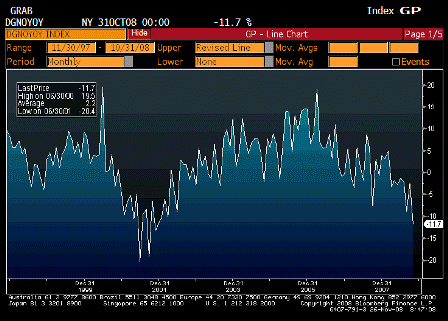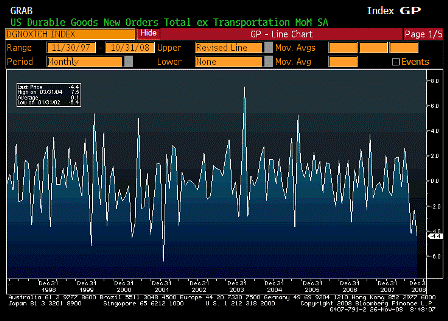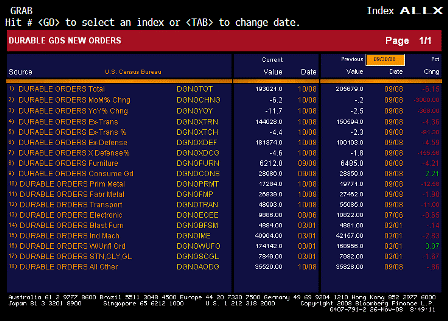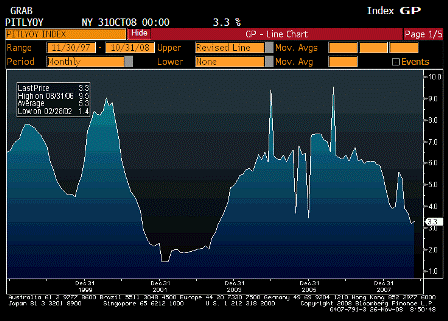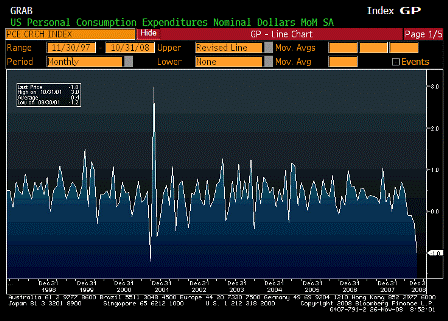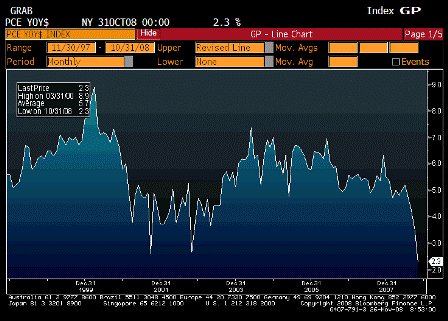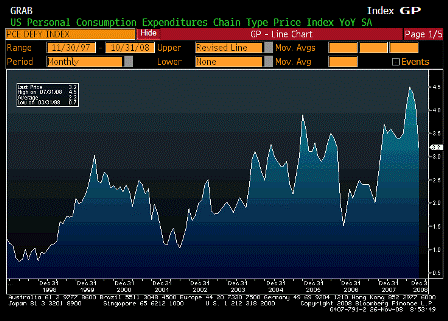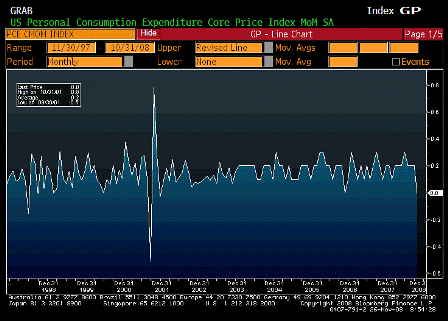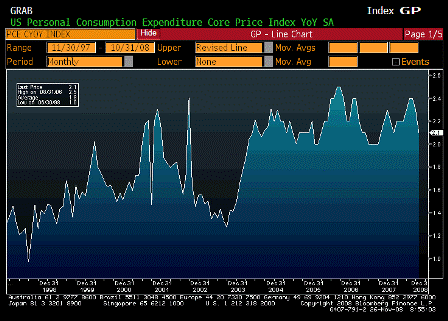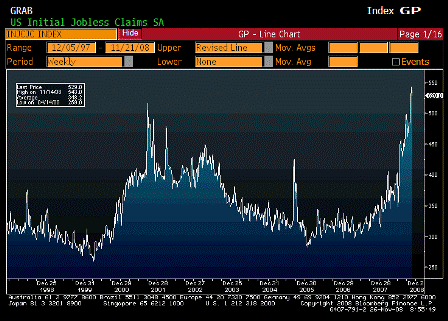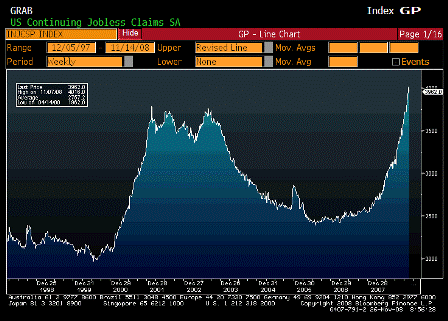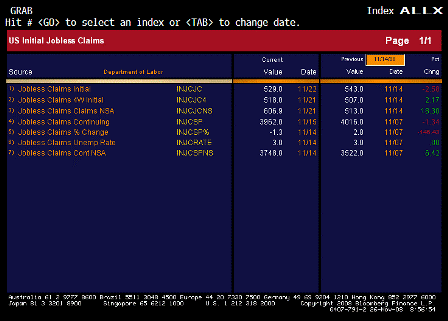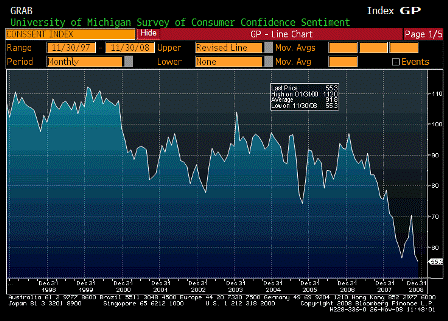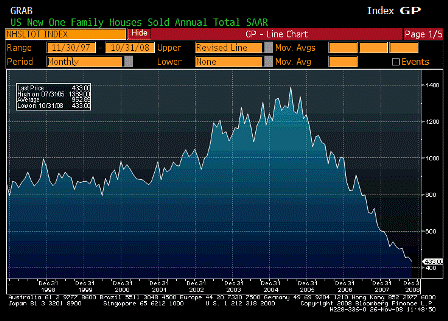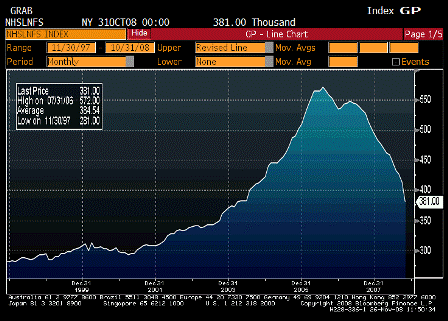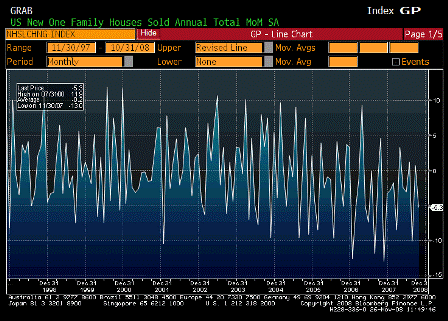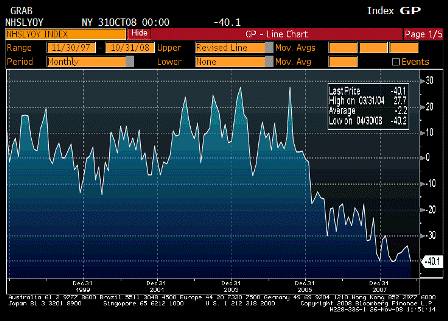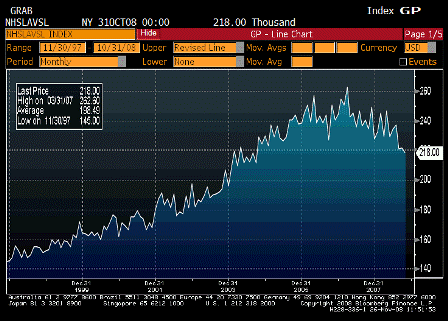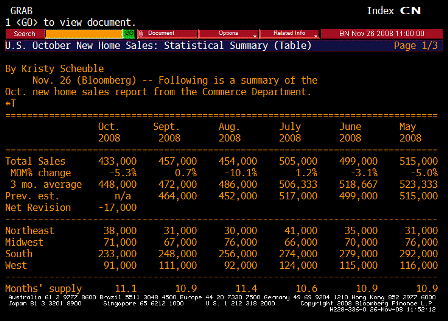[Skip to the end]
Dear all-
As one of the European Commission staff members responsible for macroeconomic analysis in the late 1970s and the 1980s, I am among the “depositaires de la mémoire collective”. So it may not surprising that the emerging pressure for a huge fiscal stimulus on top of the already comprehensive bail-outs of banks and now automobile producers reminds me of the call for “concerted action” in the 1970s and which lead to one of biggest fiscal boosts in post-war economic history, although unequally implemented by the various OECD countries. As some of you will remember the “concerted action” was followed by the second oil shock leading to a large deterioration of the EU’s current external account.
Yes, there is a similar risk today if there is a return to even moderate levels of growth and employment, if there isn’t a policy that also results in a substantial reduction of crude oil consumption.
And, unfortunately, since the effects on domestic demand of a fiscal stimulus normally take at least a year to come through the concerted action impacted on the economy at the wrong time and can now also be classified as the major economic policy failure of the post-war period.
With respect to the present situation I have three concerns or questions:
What will be the delays with which the huge stimulus package(s) will have effect on the real economy?
I have proposed a ‘payroll tax holiday’ for the US, where the treasury makes all FICA payments for employees and employers for an indefinite period of time.
This will have an immediate, positive effect on aggregate demand and will also move to quickly repair most credit quality from the ‘bottom up.’
What the banks and autos, for example, need most are consumers who can afford their mortgage payments and afford to purchase cars. The current ‘top down’ approaches, while perhaps ‘necessary’ don’t address this issue.
The credit losses of today in many cases were not there a year ago, and are in no trivial way a responsibility of government that did not make sufficient fiscal adjustments to sustain aggregate demand. This has yet to be understood, and so instead the victims are often being blamed and punished, and conditions continue to deteriorate.
Is it now appropriate to neglect the huge body of economic analysis underpinning the findings and arguments of Lucas (and Ricardo)? In particular, since the current problem is in large part a lack of cash is there not now a major risk that the fiscal stimulus will go directly into an increase in household and enterprise saving without any effects on demand?
If that is the case, it means a larger fiscal adjustment is in order.
Tax liabilities reduce aggregate demand, government spending adds to it. The higher the savings desires, the lower the tax liabilities need to be to ‘support’ a given level of government spending.
Spending by central governments (not the national governments in the eurozone, which is a serious, separate matter) with non convertible currencies and floating exchange rate policies is not constrained by revenues. Operationally, said spending is a simple matter of making an entry in the governments own spread sheet.
Yes, ‘over spending’ does carry the (non trivial) risk of ‘inflation,’ but not the risk of solvency or operational sustainability.
Would anybody actually be able to identify and examine the alternatives for public policy in the present situation, as between say:
Further public acquisition of more or less toxic assets, including even acquisition (wholly or in part) of the mortgaged houses and properties in several of the major economies.
A US payroll tax holiday would immediately begin to reduce loan delinquencies which are the root of the credit issue. banking is necessarily pro cyclical and attempting to change that is a counterproductive exercise.
The place for counter cyclical policy is fiscal policy, as the government is the only entity without a solvency issue (again, national governments in the eurozone do have solvency issues due to current eurozone institutional arrangements.)
It is also clear to me that altering interest rates is at best a very weak force for sustaining aggregate demand with growing evidence that lower rates reduce demand through the personal income channel. With governments net payers of interest, the non government sector is a net saver, and cuts in rates necessarily lower interest income of the non govt sector. At the same time, in a downturn credit worthiness of borrowers deteriorates, and the interest rates borrowers pay does not fall as quickly as rates for savers fall. instead, margins for lenders increase to reflect the increased risk.
Also, all the CB studies i have seen show output and inflation responses to interest rate changes are at best relatively small and seem to have maybe a two year lag, which generally takes them across the next fiscal cycle.
Further nationalization of the failed banks and other corporations, with, of course, the options of re-privatizing them once the markets have stabilized.
My first banking job was in the early 70’s, when US housing starts peaked at over 2.5 million per year, with a population of only 215 million people, and all facilitated by sleepy savings banks run by very modestly paid bankers who did nothing more than gather deposits by giving away small kitchen appliances and make mortgage loans with up to 75% loan to value ratios.
In the latest cycle, US housing peaked at 2.1 million annual units, with a population of over 300 million people, and it was termed ‘gang busters’ and an unsustainable bubble.
Banks are agents of government that exist for public purpose. Let me suggest both theory and experience shows that complex finance preys on the real sector, rather than enhances it.
That said, we do have to play the cards we are dealt, so let me continue by saying the eternal lesson of banking is that the liability side is not the place for market discipline. Instead, market discipline is best applied on the asset side, with (strict) regulation and supervision of capital ratios and asset quality. We have again learned that the ugly way, as we watched interbank conditions deteriorate as the fed agonizingly slowly worked towards making sure its member banks have secure sources of funding at the fed’s target rates. And they still aren’t there yet. It yet to be fully recognized that the Fed demanding collateral when it lends to member banks is redundant- the FDIC and OCC already regulate bank capital and asset quality, and the FDIC already allows the banks to fund all their assets with FDIC (govt) insured deposits.
What is also missed by the media, most mainstream economists, and even senior fed officials, is that monetary policy is about price, and not quantity. fed actions do not alter net financial assets of the non govt sector, as a simple matter of accounting. Fed actions do alter various monetary aggregates, but in general this alteration per se has no further economic ramifications. i recall that after the ‘500 billion euro day’ there was a futile search of the ECB’s numbers published the following week to see ‘where the money went’ and no one could find it.
And the us stock market was moving wildly up or down when the size of a Fed repo operation was announced.
Even today the news continues about the fed ‘throwing trillions of liquidity at the markets’ ‘blowing up it’s balance sheet’ as if that mattered beyond the setting of interest rates.
The same media, economists, and officials also miss the fact that with non convertible currency and floating FX causation runs from loans to deposits. Bank lending is (in general) not constrained by ‘available funds’ as it would be with a fixed exchange rate policy. ‘Giving’ banks ‘money’ (reserve balances) to get them to lend is conceptually absurd, for example, as is criticizing banks for ‘hoarding money.’
These are all throw backs to the era of the gold standard, where there were actual supply side constraints on the convertible currency needed for reserves where depositors demanded that convertible currency for withdrawals. And even the treasury had to compete for convertible currency via interest rates when it borrowed to spend. This is still the case today with the odd fixed exchange rate policies that currently are in force.
The problem with the fiscal stimulus is, I think, that it will take time to get adopted and impact on the economy and that, consequently, it is unlikely to prevent a further deterioration of the overall economic prospects during the next twelve months, a period which may be critical for the overall financial and economic stabilization.
A payroll tax holiday would have immediate, substantial results, as they currently remove about $1 trillion annually from us workers and businesses, and are highly regressive.
Additionally, $100 billion of federal revenue sharing for states to use for their operating budgets would immediately reverse the troubling trend towards the reduction of essential public services due to state revenue shortfalls.
When there is undesired excess capacity, as is the case today, government has the option of directing it towards either public or private goods, services, and investment. The payroll tax holiday directs that output towards restoring private sector goods and services, while state revenue sharing results in increased public goods and services.
The choice is purely political. My proposals are based on what I think are politically desired at this time.
Maybe, and as some observers have already suggested, the Swedish experience could provide some lessons for understanding the issues at present.
I would sincerely welcome a debate on these issues.
For the eurozone, under current arrangements the only entity without a solvency issue is the ECB. What is needed is some channel for the ECB to conduct the type of counter cyclical fiscal policy needed to restore eurozone output and employment. Otherwise, the eurozone will continue to perform well below its potential.
Let me last say that the Fed’s swap lines to many of the world’s CB’s are qualitatively very different from its domestic monetary operations. The funds advanced are functionally no different from purchasing ‘$ bonds’ from the various CB’s around the globe, yet have remained far below all radar screens, including Congress’s. Do you think the US congress would approve a $30 billion loan to Mexico? A $350 billion loan to the ECB? Maybe, but I suspect there would be, at a minimum, much debate. Yet the fed has been allowed to do this, and in ‘unlimited quantities’ for the BOJ, BOE, SNB, and ECB’ without any oversight.
Tax liabilities reduce aggregate demand, government spending adds to it. The higher the savings desires, the lower the tax liabilities need to be to ‘support’ that spending.
Sincerely,
Warren Mosler
[top]

